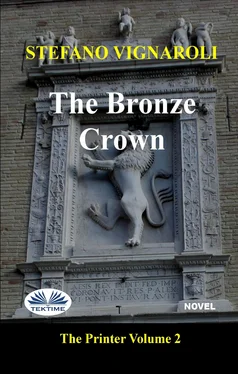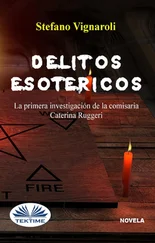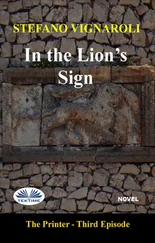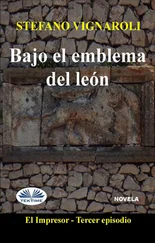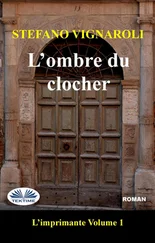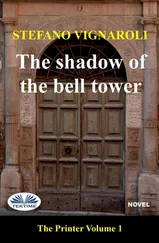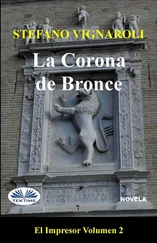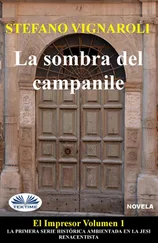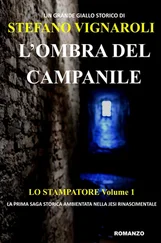Already the year before a multitude of locusts had almost eaten all the fodder, bringing a great hunger and many other miseries, which was the universal opinion that, if the Magistrate had not helped many with public money and ordered that those who killed a certain amount of locusts be rewarded, the following year a good part of the population would have starved to death. Such was the misery that the poorest people, not having enough to feed themselves, were forced to eat grasses, such as beasts, and some quantity of semolina.
In the meantime the two young people, almost breathless, had reached the top of the climb, they had walked a short stretch of Via Roccabella and had come to Piazza Colocci, illuminated by the sun on a beautiful July day, stopping to admire the facade of the Government Palace, better known as Palazzo della Signoria.
«I don’t understand why people insist on calling it Palazzo della Signoria, when in Jesi a real Signoria has never existed», Lucia began by addressing her erudite companion, hoping for his usual competent intervention.
«And indeed Jesi was a Republic, as we can see in various writings on the icons on the walls of this palace. A republic, however, subject to the highest papal power, which extended its protective wings so far: “Res Publica Aesina, Libertas ecclesiastica - Alexander VI pontifex maximus”. This was to remind everyone that Pope Alexander VI himself, in the year 1500, inaugurated and blessed this palace, the work of the architect Francesco di Giorgio Martini, granting the city of Jesi to continue to be an independent republic and to continue to be able to adorn the symbol of the city, the rampant lion, with the royal crown, provided that it was in any case respectful of the power of the Church, and at the same time accepted the important presence of a papal legate.»
«Interesting. So it is clear that the name Palazzo della Signoria is linked to the architect who built it, and who is among those who designed the Palazzo Vecchio in Florence.» At that moment, Lucia set her gaze on the marble icon, depicting the rampant lion in relief, surmounted by a bronze crown post. Underneath the icon, an inscription in a Latin that was not very comprehensible. «It seems that this crown, above the lion, has very little to do with the rest of the work. Why didn’t the sculptor who made the work also sculpt the crown above the lion’s head? And this inscription? A very rough Latin, I’d say. The dates aren’t written correctly either!»
MCCCCLXXXXVIII
AESIS REX DEDIT FED IMP
CORONAVIT RES P. ALEX
VI PONT INSTAURAVIT
«Sure», replied Andrea. «I’'s a rather “macaronic” Latin, but what do we want to do with it, here we are between the end of the 1400s and the beginning of the 1500s. Maybe the Latin grammar had fallen into oblivion. But the meaning of the sentence is that in 1498, with the blessing of Pope Alexander VI - Rodrigo Borgia - in the facade of the Palazzo della Signoria of Jesi the crown was added to the rampant lion, in honour of the birth given by the city to Emperor Frederick II. But if you raise your eyes you also see that the Pope had another icon added, the one depicting the crossed keys, symbol of the Vatican, and the phrase “LIBERTAS ECCLESIASTICA – MCCCCCCC”, to reinforce the concept we were talking about just now.»
«Trying to translate it literally, the meaning of the sentence seems a bit different», continued Lucia. «Taking the lion as the implied subject of the sentence, one could translate: King Esius gave it, Frederick the emperor crowned it, as a symbol of the “Res publica”, Alexander VI Pontiff established it. That is, King Esio, the mythical founder of the city of Jesi, indicated the lion as its symbol; later, Emperor Frederick II, who was born here in Jesi, had it crowned proclaiming the city “royal”, i.e. faithful to the Empire; finally, Pope Alexander VI had the symbol installed on the facade of the palace, to seal the fact that Jesi remained an independent republic, although subject to ecclesiastical authority.»
Doubtful, Andrea remained silent for a few moments, then resumed, not without a hint of scepticism.
«I would have to consult some texts to answer you properly. In any case, you are certainly right about one thing: the bronze crown was added in a postponed manner at a time after the execution of the sculpture itself.»
Everything took light from her: she was the smile that illuminated everything around her
(Leo Tolstoy: Anna Karenina)
The afternoon lights cast sinister shadows on the faces of the angry crowd. Lucia was quick to run up the Pastori’s coast, walk diagonally along the dark road that ran under the walls of the Rocca and emerge in the Government’s Square, even before the first of the troublemakers arrived in that place going up the Longobardi’s Coast. He climbed the three steps that led to the churchyard of St. Augustine Church, thus remaining in a higher position than the square. In front of it, on the opposite side of the square, stood the Government Palace, recently completed and finished also inside thanks to the work of illustrious architects, such as Giovanni di Gabriele da Como, Andrea Contucci, known as Sansovino, and other distinguished sculptors and woodcarvers. Only the wooden blacksmith had yet to complete his work: he had been assigned the delicate task of carving and working on the ceilings of the Sala Grande, the Chancellery, the Camera del Podestà and other rooms.
When the first people armed with rudimentary tools, such as pitchforks, axes, shovels, but also knives and spears, founded who knows where, began to arrive noisily in the Government’s Square, Lucia tried to stand up in all its height, to be noticed by all, dominating the crowd. She was excited, her heart was in her throat, she didn’t know if the words that would come out of her mouth could be the right ones. But she had to try everything. Someone began to recognize her, pointing her out to others, to those who were invading the square.
«It’s the noble Lucia Baldeschi! The betrothed of the late Captain of the People!»
«Yes, if we’d had had Andrea dei Franciolini at the head of the town and the countryside, we certainly wouldn’t be like this!»
Lucia was afraid that someone might say at that point that she agreed with her evil uncle to kill Andrea, and that if the latter hadn’t been executed, it had been by pure chance, and certainly not by her intercession. She didn’t even realize that everything around her was forming like a luminous aura, so intense that people were almost afraid of it. As the sun went down, the Square was illuminated by the light that she herself emanated from there, from the churchyard. When she raised her arms and everyone was silent, Lucia could not escape the whispered phrases of those closest to her.
«She is a Saint. She is the Virgin Mary made person!», they said, kneeling down and dropping their weapons to the ground. All this instilled more courage in her, who knew she had powers beyond the norm, which at times were beyond her control, as in this case. But she could not waste time chasing after her thoughts, the fact that if her grandmother had had time to finish instructing her, she would now be able to control these abilities to perfection. She had to talk to the person in front of her. So she let her words be inspired by her grandmother’s spirit, which perhaps still hovered indomitably around her.
«Gentlemen, rising up against the authorities makes no sense at all. There inside that Palace, the nobles and elders of Jesi, what we call the Council of the Best, are just waiting for a strong leadership. And now is the time. Yes, because Pope Adriano VI has decided to recall the papal legate, believing that Cardinal Cesarini is more useful in Rome than here in Jesi, where he is hardly ever present. And that is good for us!»
Читать дальше
